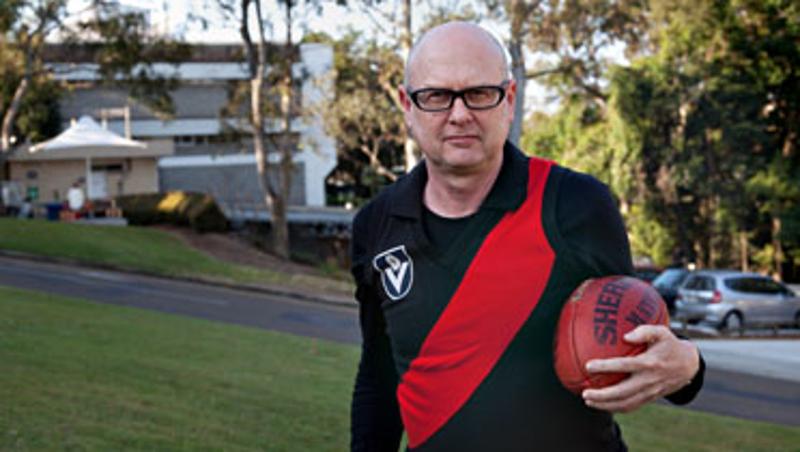
Australian Rules Football's earliest rivalry between 'toffee-nosed' Melbourne supporters and a 'democratic' Carlton club helped turn a middle-class gentlemen's game into an iconic sport, a new book shows.
Up to 30,000 Victorians flocked to watch the now Melbourne Demons and Carlton Blues play in Melbourne 140 years ago, with carrier pigeons and fights between players and brick-throwing fans part of the spectacle.
These are among colourful historical insights revealed in the first definitive account of Australian Rules Football's early history, written by Dr Mark Pennings from QUT's Creative Industries Faculty.
Released as the AFL finals series starts during the first week of September, Amateur Heroes and the Rise of Clubs: 1858-1896 documents the players, controversies, statistics and evolution of a game that is uniquely Australian.
"Aussie Rules has always been an important part of Melbourne's cultural life," Dr Pennings said.
"It was the contest between Melbourne and Carlton in the 1860s that really captured the imagination of the public.
"By 1880, 10 per cent of Melbourne's population attended matches. The games were bigger than British football (soccer) crowds in the early days."
Dr Pennings said pigeons were used to send news about the games to those who couldn't attend and players got into fights with hostile fans who threw stones and bricks at opposing teams.
The book traces what was originally known as "Melbourne Football Club Rules" up to the formation in 1897 of the Victorian Football League (now AFL). Dr Pennings' research also highlights Aboriginal players' contribution to the game, and the discrimination they faced.
Published through Connor Court Publishing in Victoria, the book is the first in a series of four volumes called Origins of Australian Football: Victoria's Early History.
"This book is going to be marvellous for genealogists and football historians. It's going to give a full picture of that period and insight into the social mores of the time as they related to sport," Dr Pennings said.
An art historian who grew up in Melbourne and supports Essendon FC, Dr Pennings has spent the past 12 years piecing together the early history of Aussie Rules, including its disputed origins.
He said his research showed the sport started in Australia as a variation of rugby.
Dr Pennings said white-collar workers, cricketers and private school students from Melbourne Grammar and Scotch College played Aussie Rules in the 1860s and the sport spread to sportsmen from other classes by the mid-1870s.
"For the first 15 years, it was a middleclass gentlemen's game and a popular past-time among cricketers, who were looking for a sport in the off-season," he said.
"It started on rectangular fields like rugby, and there were only 10 original rules. These rules were fairly open so it became a unique game because it developed on the field of play as players argued over how the rules might be developed during a game. "
Dr Pennings said many of the stereotypes about the supporters of different football clubs could be traced back to the formative years of Aussie Rules.
He said the AFL's oldest club, Melbourne, was known as a team for the "toffee-nosed and wealthy", for example, while Carlton had players from diverse backgrounds and was perceived as democratic.
"Collingwood was working class when it was founded in 1892. St Kilda is an arts club and always recruited players from diverse classes and interests.
"Some of these ideas still persist today."
Visit the publisher's site www.connorcourt.com for more information about the book.
RELATED ARTICLE:
Extreme sports not about risk-taking: study
Media contact:
Stephanie Harrington, media officer, 3138 1150, stephanie.harrington@qut.edu.au


